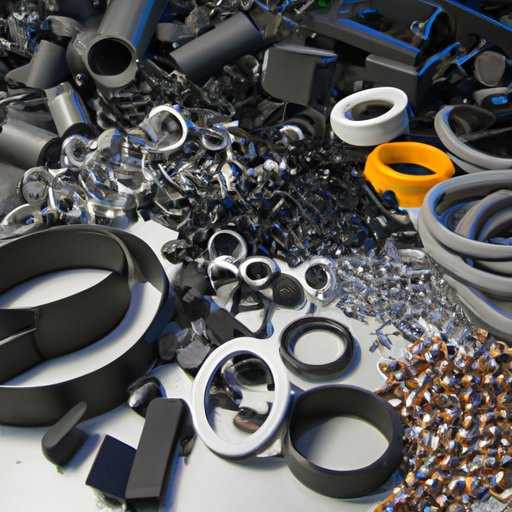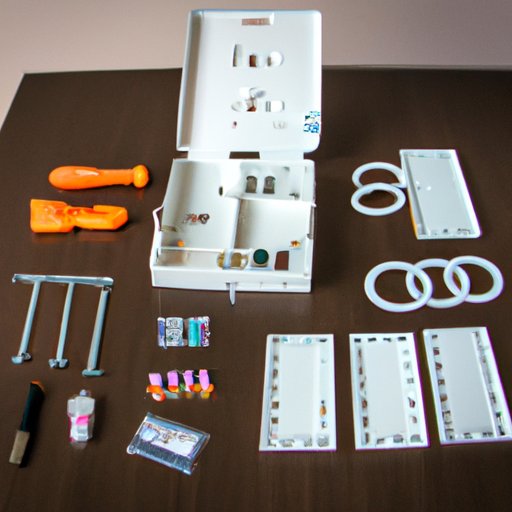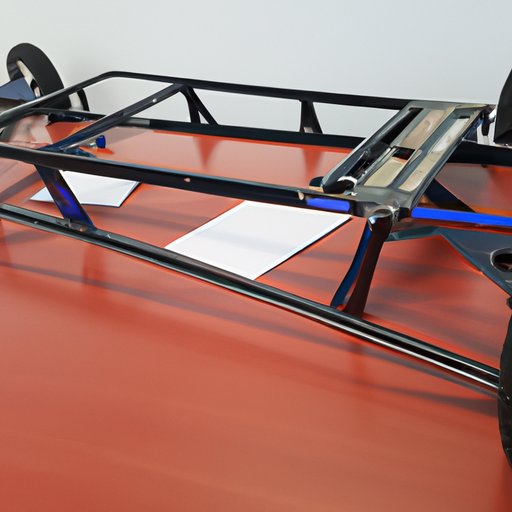Introduction
The shift towards electric vehicles is well underway, with many major automakers focusing on producing more efficient and sustainable electric cars. But you don’t have to buy a ready-made electric car in order to join the trend – if you have some mechanical know-how and access to the right tools and components, you can build an electric car yourself! In this article, we will explore the different ways you can build an electric car at home, including using a DIY kit, building it from scratch, and converting an existing gasoline-powered vehicle.
Research the Components Needed for an Electric Car
Before you begin building an electric car, there are several important components you need to research and source. Depending on the type of vehicle you plan to build, you may need parts such as an electric motor, batteries, an inverter, a controller, and other electrical components. You will also need various mechanical components such as a chassis, suspension, wheels, and brakes. Additionally, you may need specialized tools for working with metal and wiring.
Considerations for Choosing the Right Parts
When choosing parts for your electric car, it’s important to consider the type of vehicle you are building, as well as its intended use. For example, if you are building a small city car, you may want to opt for lighter components such as aluminum or carbon fiber. On the other hand, if you are building a larger off-road vehicle, you may want to look for heavier-duty components that can withstand more rugged terrain. Additionally, you should make sure that all the components you choose are compatible with each other.

Sources for Obtaining Parts and Materials
Once you have identified the components you need, you can begin sourcing them. There are several online retailers that specialize in selling parts and materials for electric vehicles, and they often offer discounts for bulk orders. Additionally, you can often find used parts at salvage yards or on online marketplaces such as eBay. If you don’t have access to these sources, you may be able to find what you need at a local auto parts store.
Assemble a DIY Electric Vehicle Kit
One of the easiest ways to build an electric car at home is by using a DIY electric vehicle kit. These kits typically include all the components you need to build a basic electric car, along with detailed instructions for assembly. They are usually designed for novice builders, so even if you don’t have any experience with car building, you should still be able to assemble one. Additionally, most kits come with customer support, which can be helpful if you run into any issues during the building process.

Benefits of Using a Kit
Using a DIY electric vehicle kit has several advantages over building an electric car from scratch. For starters, the kit provides you with all the components you need, so you don’t have to worry about sourcing them individually. Furthermore, the instructions are usually very detailed, making it easier for novice builders to follow along. Finally, since the components are designed to work together, you don’t have to worry about compatibility issues.

Steps for Assembling the Kit
The steps for assembling a DIY electric vehicle kit vary depending on the type of kit you purchase, but generally speaking, the process involves connecting the motor and battery, attaching the body panels, and wiring the electrical system. The kit should come with detailed instructions for each step, and you may also want to refer to online tutorials for guidance. Additionally, if you run into any issues, you can contact the kit manufacturer for assistance.
Build an Electric Car from Scratch
If you have more experience with car building and are looking for a greater challenge, you may want to consider building an electric car from scratch. This involves designing and fabricating the chassis, installing the motor and battery, and connecting the electrical system. It is a much more complex process than assembling a kit, so you should make sure you have a good understanding of the components and how they work before attempting this project.

Designing and Building the Chassis
The first step in building an electric car from scratch is designing and building the chassis. This involves selecting the appropriate materials and fabricating the frame and body panels. Depending on the design you choose, you may need to weld or rivet the parts together. Additionally, you should make sure that the chassis is strong enough to support the weight of the motor and battery.
Installing the Motor and Battery
Once the chassis is complete, you can begin installing the motor and battery. This involves connecting the motor to the drivetrain, mounting the battery in its designated compartment, and running the necessary wiring. If you are unfamiliar with these processes, you may want to consult a professional technician or an experienced builder for assistance.
Connecting the Electrical System
The final step in building an electric car from scratch is connecting the electrical system. This involves wiring the motor, battery, and other components together, as well as programming the controller. If you are not comfortable with this process, you may want to hire an electrician to assist you.
Convert an Existing Gasoline-Powered Vehicle to Electric Power
Another option for building an electric car at home is to convert an existing gasoline-powered vehicle to electric power. This involves replacing the engine and fuel system with an electric motor and battery, as well as rewiring the electrical system. This process is more complex than building an electric car from scratch, but it offers the advantage of being able to reuse many of the existing components.
Advantages of Conversion
Converting an existing vehicle to electric power has several advantages over building an electric car from scratch. For starters, it requires less fabrication work, as you can reuse many of the existing components. Additionally, it allows you to keep the same body style and interior, which can be beneficial if you are looking to build a replica of an iconic classic car. Finally, it is often cheaper than building an electric car from scratch.
Steps for Converting the Vehicle
The steps for converting a gasoline-powered vehicle to electric power involve removing the engine and fuel system, installing the electric motor and battery, and rewiring the electrical system. Additionally, you may need to modify the transmission, suspension, and other components to accommodate the new motor and battery. This process can be tricky, so it is important to consult with a professional technician or an experienced builder for assistance.

Utilize Online Resources and Expert Advice
No matter which method you choose for building an electric car at home, it is important to utilize online resources and expert advice whenever possible. There are many online forums and communities dedicated to electric vehicle building, where you can get answers to your questions and connect with experienced builders. Additionally, there are numerous online tutorials and guides that can provide you with step-by-step instructions for completing various tasks. Finally, you may want to seek out a professional technician or electrician for assistance with any complex tasks.
Conclusion
Building an electric car at home can be a rewarding and challenging experience. Whether you choose to assemble a DIY kit, build it from scratch, or convert an existing vehicle, there are several components and steps involved. Make sure to research the parts you need, source them from reliable vendors, and utilize online resources and expert advice whenever possible.
(Note: Is this article not meeting your expectations? Do you have knowledge or insights to share? Unlock new opportunities and expand your reach by joining our authors team. Click Registration to join us and share your expertise with our readers.)
